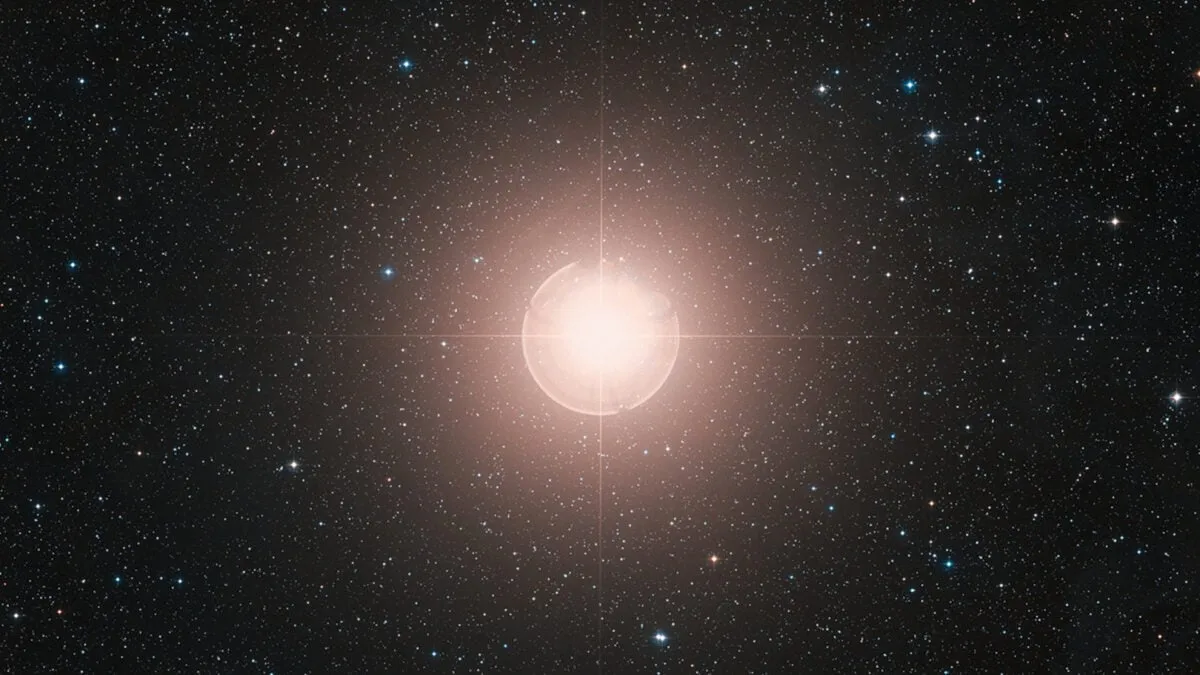
A couple of months ago, astronomers officially confirmed the existence of Betelbuddy, the long-suspected companion star of Betelgeuse. Since this significant discovery, researchers have been diligently working to characterize Betelbuddy, only to find that with each new observation, the star deviates further from initial expectations. A recent study published in The Astrophysical Journal offers an in-depth analysis of Betelbuddy, utilizing data gathered by NASA’s Chandra X-ray Observatory and the Hubble Space Telescope.
In what are described as the “deepest X-ray observations of Betelgeuse to date,” researchers have concluded that Betelbuddy is most likely a young stellar object (YSO) comparable in size to our Sun. This finding supports an earlier study that predicted Betelbuddy's surprising youth in contrast to Betelgeuse, a red supergiant nearing the end of its stellar life. However, these findings also challenge several long-held assumptions about the composition and characteristics of Betelbuddy.
The project to study Betelbuddy was characterized as a “race against time,” as researchers had to capture observations before the star disappeared behind Betelgeuse for the next two years. The Gemini North Telescope in Hawaii managed to capture a faint image of Betelbuddy, a remarkable achievement considering the extreme brightness difference between Betelgeuse and its small companion. Anna O’Grady, the study's lead author and a postdoctoral researcher at Carnegie Mellon University, emphasized in a statement, “The brightness difference between Betelgeuse and this little companion is absolutely insane.”
To provide context, Betelgeuse is approximately 700 times larger than our Sun and thousands of times brighter. Given this disparity, the research team considered alternative methods to probe the diminutive star, including X-ray imaging and UV spectroscopy. The fact that both Chandra and Hubble accepted the proposals to observe the same event indicates the astrophysical community's enthusiasm surrounding Betelbuddy.
“It turns out that there had never been a good observation where Betelbuddy wasn’t behind Betelgeuse,” O’Grady remarked. “The fact that we can now confirm something is there shows how far our science has come.”
Once the data confirmed the existence of Betelbuddy, astronomers began contemplating what type of star it could be. The most “standard” hypothesis would suggest that, due to its small size and Betelgeuse’s advanced age, Betelbuddy could be a compact neutron star or a white dwarf. “And those are very, very different objects,” O’Grady noted. “If it was one of those objects, it would point to a very different evolutionary history for the system.” However, Betelbuddy did not fit this mold. The observations revealed no evidence of accretion, a characteristic typically associated with neutron stars or white dwarfs.
The X-ray data strongly supports the conclusion that Betelbuddy is indeed a young stellar object. Although it remains challenging to place strong constraints on its mass, the new findings align with the mass range predicted by the team that successfully imaged Betelbuddy in July. Importantly, Betelbuddy is significantly smaller than Betelgeuse, which contradicts the traditional notion that binary star pairs generally share similar masses.
If the observations are validated, Betelgeuse is estimated to be between 15 and 18 times the mass of Betelbuddy—a “staggering” ratio, according to the researchers. “This opens up a new regime of extreme mass ratio binaries,” O’Grady explained, suggesting the presence of a previously unexplored class of binary stars with drastically differing masses. “It’s an area that hasn’t been explored much because it’s so difficult to find them or to even identify them, like we were able to do with Betelgeuse.”
As it stands, Betelbuddy is expected to be out of detection range for approximately two years. However, when this intriguing little star reappears in November 2027, astronomers will be poised to delve deeper into its mysteries and expand our understanding of stellar formation and evolution.